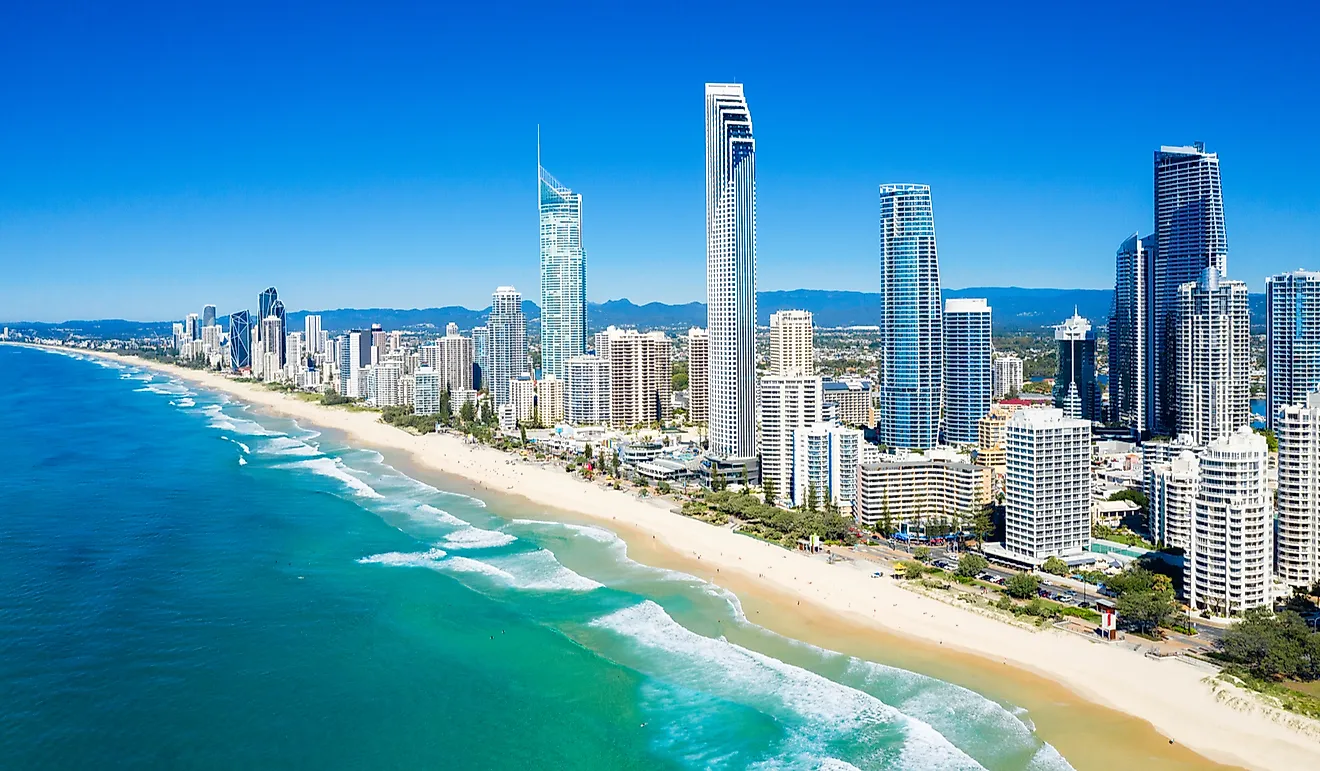Which Bodies of Water Surround Australia?

The Commonwealth of Australia is a country that is made up of mainland Australia, the island of Tasmania, the Australian Antarctic Territory, and several small islands, but the name "Australia" is usually used to refer to the mainland. It is the sixth-largest country in the world in terms of area and the largest in Oceania. Australia is an island that borders three of the world’s oceans: the Indian Ocean, Pacific Ocean, and the Southern Ocean. When these oceans are further subdivided, the country is bordered by the Arafura Sea to the north, the Coral Sea to the northeast, the South Pacific Ocean to the east, the Tasman Sea to the southeast, the Southern Ocean to the south, the Indian Ocean to the west, and the Timor Sea to the northwest. The Northern Territory and Western Australia border the Indian Ocean, while Western Australia, South Australia, and Victoria border the Southern Ocean. New South Wales and Queensland border the Pacific Ocean, and Tasmania is located in the Southern Ocean.
Australian Maritime Boundaries
Coastal Waters
Coastal waters refer to a belt of water that extends three miles from the coast of Australia. Coastal waters are considered part of the terrestrial territory, which covers the ocean surface, seabed, and airspace. The Offshore Constitutional Settlement Acts of 1980 provides guidelines on the management of coastal waters, including the use of resources such as fishing and mining.
Australian Territorial Seas
Australia's Territorial Seas are a stretch of water that surrounds Australia for 12 nautical miles. The sovereignty of Australia extends to this limit from the sea bed up to the airspace above. Under international law, unauthorized access to these waters is treated as a violation of sovereignty, and Australia has the right to exercise its laws. However, international law also provides guidelines for the use of the territorial sea by the innocent passage of foreign ships. The smaller islands of Australia have a territorial sea limit of three miles.
Australian Contiguous Zone
Australia's Contiguous Zones are a stretch of water that extends to a maximum limit of 24 miles from the coastline. Although this zone is not part of the Australian territory, the country can exercise measures to punish and prevent infringement of its fiscal, customs, sanitary, and immigration laws.
Exclusive Economic Zone
Australia's Exclusive Economic Zone (EEZ) stretches 200 miles from its coastline. Within this zone, Australia has the right to explore, exploit, conserve, and manage all natural resources from the ocean surface to the sea bed. This jurisdiction excludes the airspace, and Australia is not to interfere with any identifiable aircraft within the zone. No other country can venture into the exclusive economic zone to explore the sea without authorization from Australia. Most states use EEZs for the production of energy from currents, wind, and water, the creation of artificial islands, and marine research. Australia’s Maritime Delimitation Agreementscontain contracts with other countries over the use of the zone, especially when it overlaps with other countries. This zone is also known as the Australian Fishing Zone. Australia's entire exclusive economic zone covers over 3.14 million sq mi, which is an area larger than mainland Australia.











